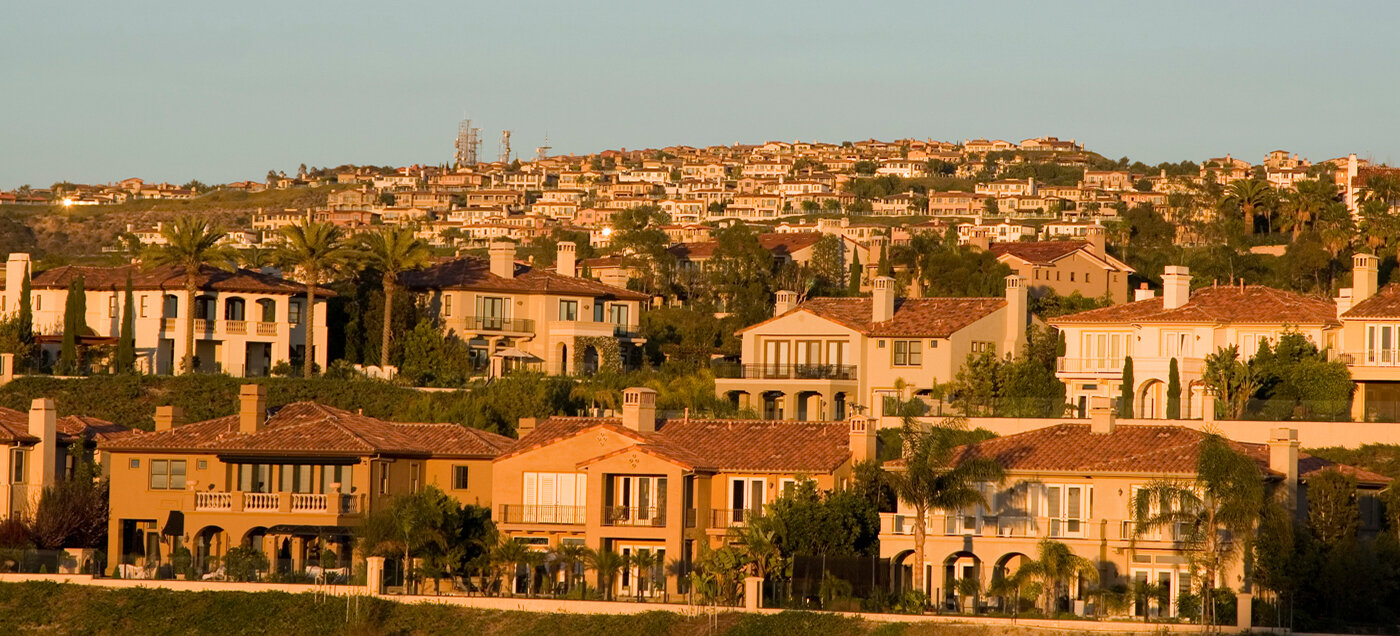Residential Real Estate News

U.S. Home Sales Jump 6.7 Percent in January
Residential News » Irvine Edition | By WPJ Staff | February 21, 2022 9:16 AM ET
According to the National Association of Realtors, existing-home sales rose in January 2022, making a notable move upward following a previous month where sales declined. On a month-over-month basis, each of the four major U.S. regions experienced an increase in sales in January. However, year-over-year, activity was mixed as two regions reported sagging sales, another watched sales increase and a fourth region remained flat.
Total existing-home sales, which include completed transactions that include single-family homes, townhomes, condominiums and co-ops, climbed 6.7% from December to a seasonally adjusted annual rate of 6.50 million in January. Year-over-year, sales fell 2.3% (6.65 million in January 2021).

"Buyers were likely anticipating further rate increases and locking-in at the low rates, and investors added to overall demand with all-cash offers," said Lawrence Yun, NAR's chief economist. "Consequently, housing prices continue to move solidly higher."
Total housing inventory at the end of January amounted to 860,000 units, down 2.3% from December and down 16.5% from one year ago (1.03 million). Unsold inventory sits at a 1.6-month supply at the current sales pace, down from 1.7 months in December and from 1.9 months in January 2021.
"The inventory of homes on the market remains woefully depleted, and in fact is currently at an all-time low," Yun said.
According to Yun, homes priced at $500,000 and below are disappearing, while supply has risen at the higher price range. He noted that such increases will continue to shift the mix of buyers toward high-income consumers.
"There are more listings at the upper end - homes priced above $500,000 - compared to a year ago, which should lead to less hurried decisions by some buyers," Yun added. "Clearly, more supply is needed at the lower-end of the market in order to achieve more equitable distribution of housing wealth."
The median existing-home price for all housing types in January was $350,300, up 15.4% from January 2021 ($303,600), as prices rose in each region. This marks 119 consecutive months of year-over-year increases, the longest-running streak on record.
Properties typically remained on the market for 19 days in January, equal to days on market for December, and down from 21 days in January 2021. Seventy-nine percent of homes sold in January 2022 were on the market for less than a month.
First-time buyers were responsible for 27% of sales in January, down from 30% in December and down from 33% in January 2021. NAR's 2021 Profile of Home Buyers and Sellers - released in late 2021 - reported that the annual share of first-time buyers was 34%.
Yun explained that the forthcoming increase in mortgage rates will be problematic for at least two market segments.
"First, some moderate-income buyers who barely qualified for a mortgage when interest rates were lower will now be unable to afford a mortgage," he said. "Second, consumers in expensive markets, such as California and the New York City metro area, will feel the sting of nearly an additional $500 to $1000 in monthly payments due to rising rates."
Individual investors or second-home buyers, who make up many cash sales, purchased 22% of homes in January, up from 17% in December and from 15% in January 2021. All-cash sales accounted for 27% of transactions in January, up from 23% in December and from 19% in January 2021.
Distressed sales - foreclosures and short sales - represented less than 1% of sales in January, equal to the percentage seen in both December and January 2021.
According to Freddie Mac, the average commitment rate for a 30-year, conventional, fixed-rate mortgage was 3.45% in January, up from 3.10% in December. The average commitment rate across all of 2021 was 2.96%.
Single-family and Condo/Co-op Sales
Single-family home sales jumped to a seasonally adjusted annual rate of 5.76 million in January, up 6.5% from 5.41 million in December and down 2.4% from one year ago. The median existing single-family home price was $357,100 in January, up 15.9% from January 2021.
Existing condominium and co-op sales were recorded at a seasonally adjusted annual rate of 740,000 units in January, up 8.8% from 680,000 in December and down 1.3% from one year ago. The median existing condo price was $297,800 in January, an annual increase of 10.8%.
"The market is still thriving as an abundance of home sales took place in January," said NAR President Leslie Rouda Smith. "We will continue to beat the drum for more inventory, which will give buyers additional options and will also help alleviate increasing costs."
Regional Breakdown
Existing-home sales in the Northeast grew 6.8% in January, posting an annual rate of 780,000, an 8.2% decline from January 2021. The median price in the Northeast was $382,800, up 6.0% from one year ago.
Existing-home sales in the Midwest rose 4.1% from the prior month to an annual rate of 1,510,000 in January, equal to the level seen from a year ago. The median price in the Midwest was $245,900, a 7.8% rise from January 2021.
Existing-home sales in the South jumped 9.3% in January from the prior month, reporting an annual rate of 2,940,000, a gain of 0.3% from one year ago. The median price in the South was $312,400, an 18.7% surge from one-year prior. For the fifth straight month, the South witnessed the highest pace of appreciation.
"The migration to the Southern states is clearly getting reflected in higher home sales and fast rising home prices compared to other regions," Yun said.
Existing-home sales in the West increased 4.1% from the previous month, registering an annual rate of 1,270,000 in January, down 6.6% from one year ago. The median price in the West was $505,800, up 8.8% from January 2021.
Sign Up Free | The WPJ Weekly Newsletter
Relevant real estate news.
Actionable market intelligence.
Right to your inbox every week.
Real Estate Listings Showcase
Related News Stories
Residential Real Estate Headlines
- More Americans Opting for Renting Over Homeownership in 2024
- BLOCKTITLE Global Property Tokenization Platform Announced
- Small Investors Quietly Reshaping the U.S. Housing Market in Late 2024
- Greater Miami Overall Residential Sales Dip 9 Percent in November
- U.S. Home Sales Enjoy Largest Annual Increase in 3 Years Post Presidential Election
- U.S. Housing Industry Reacts to the Federal Reserve's Late 2024 Rate Cut
- U.S. Home Builders Express Optimism for 2025
- Older Americans More Likely to Buy Disaster-Prone Homes
- NAR's 10 Top U.S. Housing Markets for 2025 Revealed
- U.S. Mortgage Delinquencies Continue to Rise in September
- U.S. Mortgage Rates Tick Down in Early December
- Post Trump Election, U.S. Homebuyer Sentiment Hits 3-Year High in November
- Global Listings Aims to Become the Future 'Amazon of Real Estate' Shopping Platform
- Greater Las Vegas Home Sales Jump 15 Percent in November
- Ultra Luxury Home Sales Globally Experience Slowdown in Q3
- World Property Exchange Announces Development Plan
- Hong Kong Housing Market to Reach Equilibrium in Late 2025
- Construction Job Openings in U.S. Down 40 Percent Annually in October
- U.S. Mortgage Applications Increase in Late October
- World Property Markets, World Property Media to Commence Industry Joint-Venture Funding Rounds in 2025
- New Home Sales Hit 2 Year Low in America
- U.S. Pending Home Sales Increase for Third Consecutive Month in October
- Pandemic-led Residential Rent Boom is Now Fizzling in the U.S.
- Emerging Global Real Estate Streamer WPC TV Expands Video Programming Lineup
- 1 in 5 Renters in America Entire Paycheck Used to Pay Monthly Rent in 2024
- U.S. Home Sales Jump 3.4 Percent in October
- Home Buyers Negotiation Power Grows Amid Cooling U.S. Market
- Canadian Home Sales Surge in October, Reaching a Two-Year High
- Greater Orlando Area Home Sales Continue to Slide in October
- U.S. Mortgage Credit Availability Increased in October
- U.S. Mortgage Rates Remain Stubbornly High Post Election, Rate Cuts
- Construction Input Prices Continue to Rise in October
- BETTER MLS: A New Agent and Broker Owned National Listings Platform Announced
- Home Prices Rise in 87 Percent of U.S. Metros in Q3
- Caribbean Islands Enjoying a New Era of Luxury Property Developments
- The World's First 'Global Listings Service' Announced
- Agent Commission Rates Continue to Slip Post NAR Settlement
- Market Share of First Time Home Buyers Hit Historic Low in U.S.
- Greater Palm Beach Area Residential Sales Drop 20 Percent Annually in September
- Mortgage Applications in U.S. Dip in Late October





